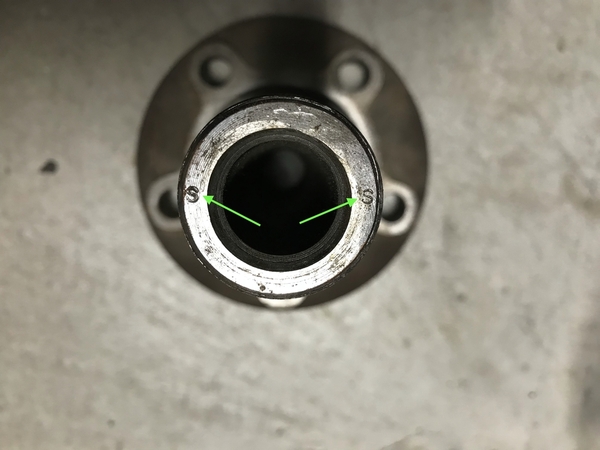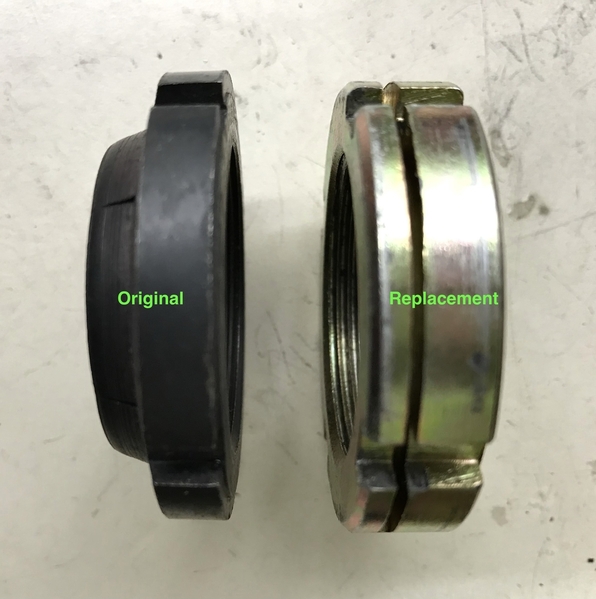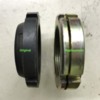Oakster, at my age, I don't screw around with stuff like that. Use a small tip on a CUTTING TORCH and carefully blow a piece off the old half-height nut. The stub axle threads will be unharmed. Using the factory pin-socket wrench on half-height nuts will do this. The enveloping socket the vendors sell works fine on both types of nut. Don't worry about stripping the axle threads. They strip at around 1100 ft-lbs!
Note that once you do get the upright apart, there are two areas to check. You can radically reduce the amount of hydraulic force needed by knocking the lug bolts loose from their hub splines before pressing. If it takes too much hydraulic pressure to push the stub axle out, the mild steel outer bearing retainer may go conical. If it's not flat, carefully hammer it flat or the new bearing set can shift enough in the upright to act just like another 'loose bearing'.
Second, most "rear wheel bearing problems" are really stub axle problems. Wear on the stub-axle shaft where the bearings contact, in the order of 0.0010" will produce the same problem and you need a five-place 1-1/2" micrometer to see it. Reproduction stub axles are relatively cheap, are several time stronger- real racers successfully use them- and are made of better steel than NOS axles. They have no central hole. Mic' ALL replacement stub axles- there have been a very few undersized aftermarket axles.
Drag racing starts combined with never greasing the halfshaft splines can wear or twist the splines. This can be seen visually once the parts are separated. There is no possible repair except replacing the felt lube ring inside the threaded nut. Spicer halfshafts may still be available, are lighter & stronger than OEM and are better balanced. They also take a one-size-smaller u-joint (F-500 Ford truck u-joint) than stock
Finally, when reinstalling a halfshaft, there are 8 bolts & nuts holding the ends. If even ONE nut is only slightly loose, a mysterious shake can show up under hard acceleration. Tighten all those fasteners to spec! This is easier if the bolts are installed with the threads pointing INWARD. It takes some fiddling but it IS possible to do on both ends. Then the bolt heads can be held with an open-end wrench while a real torque wrench fits on the nuts. And many of us install both halfshafts with the small end outboard, for more exhaust pipe clearance.





